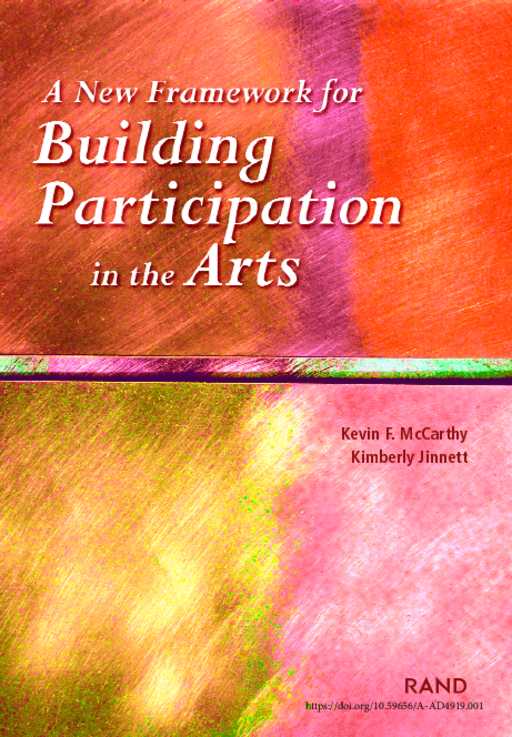- Author(s)
- Kevin F. McCarthy and Kimberly Jinnett
- Publisher(s)
- RAND Corporation
Research Approach
This report is based on a review of research, site visits at 13 arts institutions, and a telephone survey of 102 arts organizations in the United States.
In the first phase of the study, the RAND team developed a theoretical model to examine the factors that are most likely to influence an individual’s decision to participate in the arts. This model is based on a review of related studies, as well as interviews with multiple arts organizations that have received audience-building grants from the Foundation.
During the second phase of the work, RAND surveyed more than 100 administrators of arts organizations. With the survey results, the RAND team refined the model. It also drew conclusions about the most effective ways to increase arts participation.
Literature Review, Interviews, and Survey
Researchers found that the research literature on arts participation typically addresses the who, what, and how of arts participation. It doesn’t examine why people behave as they do. The studies that examine participants’ motivations focus on the reasons individuals cite for their decisions. They don’t address how people reached their decisions.
The site visits provided researchers with an understanding of how individual arts organizations approach participation-building. The institutions were selected from a list of exemplary organizations that received support from the Wallace-Reader’s Digest Funds. They represented different artistic disciplines and locations, had different resource levels, and were serving different target populations.
The arts organizations that researchers surveyed either had received or were receiving support from the Funds and the Knight Foundation. The survey collected quantitative and systematic information about the characteristics of these organizations. It also examined the activities they undertook to increase participation.

